Seized N Korean ship: Cuban weapons on board
- Published
The ship was seized by authorities in Panama after military cargo was found hidden in a shipment of sugar
Cuba has admitted being behind a stash of weapons found on board a North Korean ship seized in the Panama Canal.
The Cuban foreign ministry said the ship was carrying obsolete Soviet-era arms from Cuba for repair in North Korea.
The ship was seized by Panama last week after "undeclared military cargo" was found hidden in a shipment of sugar.
United Nations sanctions prohibit the supply of arms to North Korea in the dispute over its nuclear programme.
A Cuban foreign ministry statement said Cuba reaffirmed its commitment to "peace, disarmament, including nuclear disarmament, and respect for international law".
It said the vessel was carrying 240 tonnes of obsolete defensive weapons - two anti-aircraft missile complexes, nine missiles in parts and spares, two MiG-21bis fighter planes and 15 MiG engines.
The Cuban statement said they were all made in the mid-20th Century and were to be repaired and returned to Cuba.
"The agreements subscribed by Cuba in this field are supported by the need to maintain our defensive capacity in order to preserve national sovereignty," the statement went on.
Cuba said the ship's main cargo was 10,000 tonnes of sugar.
The vessel, called Chong Chon Gang, left Russia's far east on 12 April and travelled across the Pacific Ocean before entering the canal at the start of June, with Cuba as its stated destination.
Panamanian officials said the ship was carrying a cargo of sheet metal on its journey through the canal.
However, the vessel disappeared from satellite tracking systems after it left the Caribbean side of the canal, resurfacing on 11 July.
Experts say this may indicate that the crew switched off the system which automatically communicates details of their location.
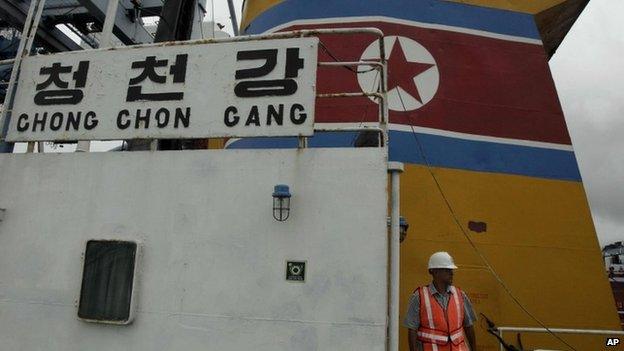
The Chong Chon Gang was searched on 12 July, with Panama announcing the discovery of "undeclared military cargo" on board on Tuesday.
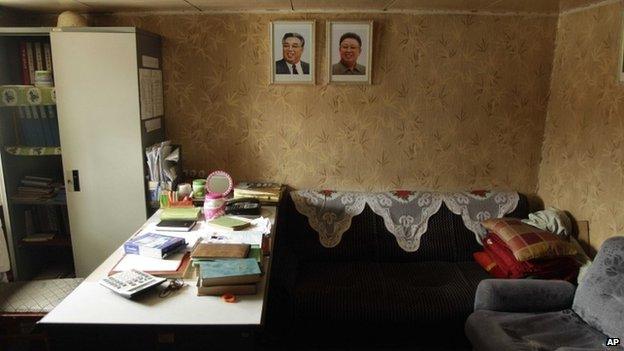
Portraits of former North Korean leaders Kim Il-sung and Kim Jong-il adorned several of the offices on board.
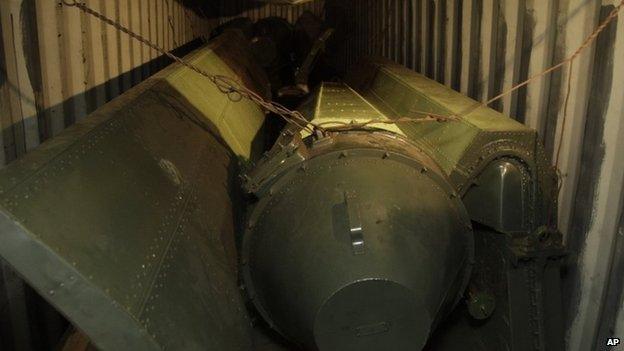
The Cuban foreign ministry said the weapons were from the Soviet era and were to be repaired and returned to Cuba.
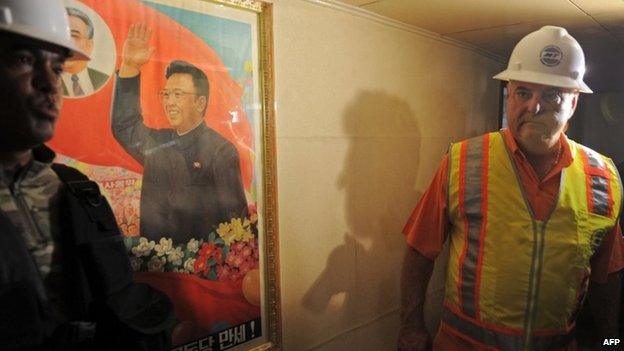
Panamanian President Ricardo Martinelli visited the vessel on Tuesday after announcing its seizure.

Portraits of former North Korean leaders Kim Il-sung and Kim Jong-il adorned several of the offices on board.
Panamanian officials tried to communicate with the vessel, suspecting it could be carrying illegal goods initially thought to be drugs.
The crew did not respond, so the ship was boarded and the weaponry was uncovered.
'Historical ties'
North Korea and Cuba are both nominally communist, and a high-level military delegation from North Korea visited at the end of June and was received by President Raul Castro.
Cuban media said they discussed "the historical ties that unite the two nations and the common will to continue strengthening them".
Arms trafficking expert Hugh Griffiths told the BBC the ship's voyage could be seen in the wider context of renewed military co-operation between the two nations.
Announcing the seizure of the vessel on Tuesday, Panamanian President Ricardo Martinelli said it contained suspected "sophisticated missile equipment".
He posted on his Twitter account an image of a large green object inside a cargo container.
Analysts from Jane's defence think-tank identified the object as part of an SNR-75 Fan Song radar, used to guide missiles fired by the SA-2 air-defence system.
The Soviets developed the SA-2 in the late 1950s but began to phase it out in the 1980s.
However, the system is still widely used in countries that were Soviet allies during the Cold War.
US ambassador Rosemary DiCarlo: "Shipments of arms or related material to and from (North) Korea would violate Security Council resolutions"
Mr Martinelli said the 35-strong crew had resisted the search and the captain had tried to kill himself.
The crew face possible charges of illegal weapons smuggling in Panama.
Panamanian Security Minister Jose Raul Mulino said that even if the military cargo was found to be "obsolete", it was still "illicit" to carry it through Panamanian territory without prior notification.
Mr Mulino said that Panama was awaiting the arrival of a commission from the United Nations Security Council to help inspect the arms found aboard the boat.
He said two of the ship's five container sections had been searched so far.
A regional intelligence expert with experience of checking vessels for illicit cargo told the BBC it could take two to three days to complete the search.
He said the Panamanian authorities would be using dog teams to try and find the illicit cargo while divers searched the outside of the vessel.
According to the expert, the ship has been suspected of carrying narcotics in the past, which would have made it a prime target for a search.
The failure of the crew to respond to a request by the security forces to board the ship would have rung further alarm bells.
He said the estimate of one week given by the Panamanians for the search to be finalised was probably "exaggerated" but that they would want to thoroughly inspect the crew's quarters as well as the containers before giving their final report.
The US "commended" Panama for its actions, and said it strongly supported a full inspection of the ship.
The vessel was stopped near Manzanillo on the Atlantic side of the canal last week.
Panama released details of the find on Tuesday.

- Published17 July 2013
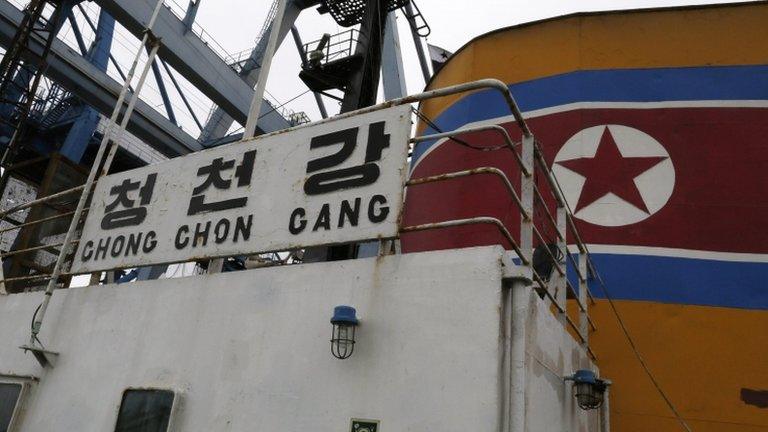
- Published17 July 2013
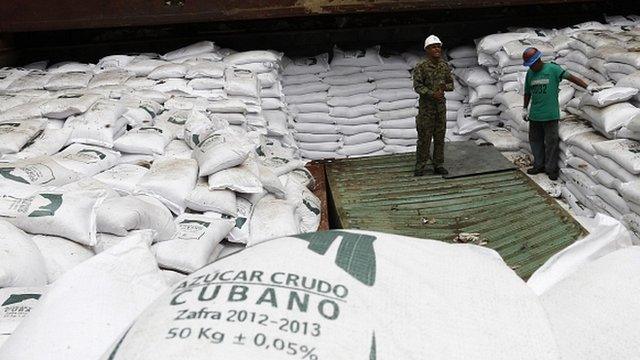
- Published17 July 2013
- Published16 July 2013
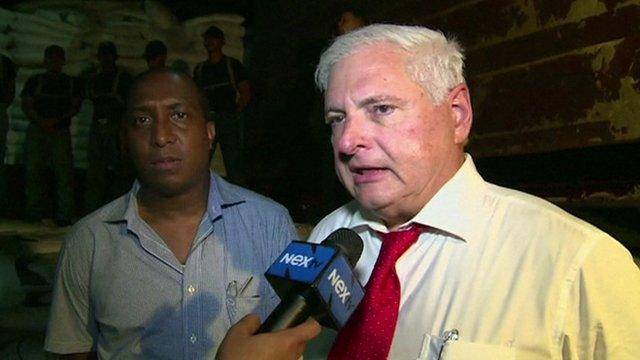
- Published10 August 2017